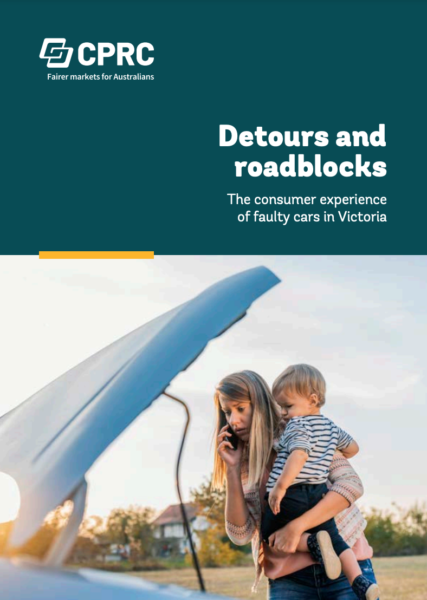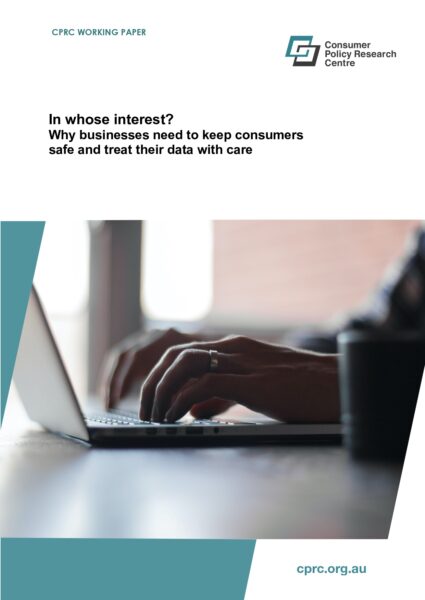June 20, 2020
Our focus in this report is on the consumer policy dimensions of COVID-19, including access to essential products and services – encompassing energy, housing, telecommunications and financial
services; access to important consumer protections; and the potential for greater harm when living our lives so pervasively online. However, given the scale and impact of COVID-19 as a health and economic event and its unprecedented impact on consumers, we have also taken a more holistic view of relevant policy issues at this time. At various points in this report we consider the interplay of consumer policy with issues of government income support and economic stimulus measures, and distributional fairness in the funding of consumer support.
Our focus on the COVID-19 crisis has been through the lens of consumers and the policies and practices that impact their interactions, experiences, wellbeing and daily lives.
COVID-19 has induced many shocks, and the consumer crisis is chief among them. As at June 2020 Australia is in recession. The downturn in consumer spending as a result of job loss, financial insecurity and social distancing is a major cause of the economic contraction. With household expenditure making up over 55% of Australian GDP, a hit to consumers is a hit to the whole economy. Correspondingly, a recovery in consumer incomes must be coupled with consumer trust and confidence for household spending to drive economic recovery. Fair treatment, safety and inclusion for all Australians must be at the heart of the recovery mission. It is the treatment of, experience and actions of consumers that will ultimately determine the trajectory of our economic and social recovery over the coming months and years.
Understanding the experiences of consumers is fundamental to designing and delivering effective support measures that reach the people who need them most. To obtain these insights for policymakers, CPRC has commenced an in-depth monthly survey tracking the experiences, needs and behaviours of Australian consumers from May to October 2020. The key findings from the May 2020 survey are set out in Chapter 2.
COVID-19 is amplifying consumer vulnerability, due to the scale of job loss and financial concerns, and the greater use of services such as energy and telecommunications while socially distancing. More people are finding it difficult to pay for the essentials. COVID-19 is also exacerbating family violence, mental health challenges and digital exclusion, each of which can make it difficult for people to engage with service providers and access support. And while the scale of consumer vulnerability has increased, some people are more exposed than others, including those working in services sectors, young people, renters, those with limited internet access and temporary migrants facing destitution on job loss.
Some of the greatest consumer vulnerabilities are likely to emerge towards the end of 2020. Early indications are that consumers are drawing down on finites resources (such as accessing credit, dipping into savings, borrowing from family and friends or applying for early access to superannuation) to make ends meet.
JobKeeper, JobSeeker and short-term consumer support measures appear to be delivering support. Once removed, in addition to debt accrued, this may trigger significant financial distress. The period ahead requires careful policy design based on evidence of evolving consumer needs. History shows us that withdrawing consumer stimulus and support measures too soon can entrench unemployment, mute consumer confidence and prolong economic recovery.
During the COVID-19 economic events, some business sectors are going to contract, while others will grow. Structural shifts are already emerging in the ways we consume technology, how we commute and work, and how we transact. The increasingly online orientation of the economy provides new channels for consumer spending and keeping people in work, provided we build in enduring, strong protection frameworks that engender consumer trust and confidence.

October 31, 2023
Faulty cars are far too common and disrupt too many lives. This report delves deep into the repercussions of faulty cars on individuals' lives, examines the legal pathways available for those seeking remedies and explores the experience of First Nations people.

March 16, 2023
Australia’s privacy laws rely on notification and consent as the primary means of protecting consumers. The onus is on consumers to navigate complex privacy protections in a continuously complex digital economy. It is time to consider reforms that hold businesses accountable for how they collect, share and use consumer data. It is time to give regulators the power to pause and assess data practices that are causing or likely to cause consumer harm.